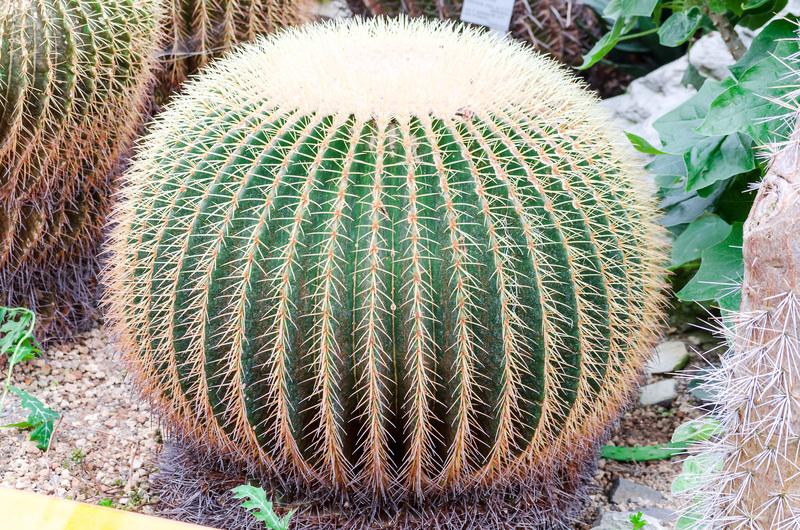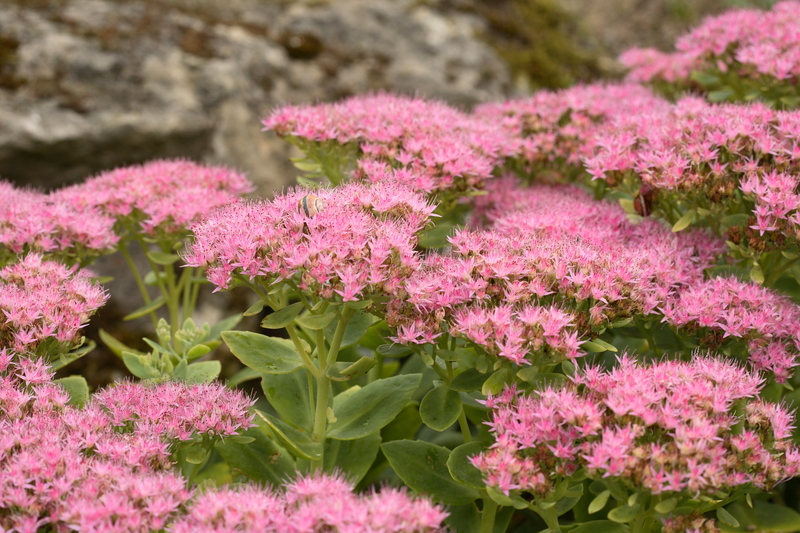Unravel the Mysteries of Nurturing Orchids
Posted on 31/05/2025
Unravel the Mysteries of Nurturing Orchids: Comprehensive Guide for Orchid Lovers
Orchids have long captivated the hearts of plant enthusiasts. With their exotic blooms and stunning diversity, these elegant flowers are symbols of beauty, luxury, and resilience. However, orchid care holds a reputation for being mysterious and even intimidating. If you've ever gazed at a blooming Phalaenopsis or marveled at the fragrant Cattleya, you might have wondered how to nurture these botanical treasures at home. This in-depth article will demystify the secrets of caring for orchids, providing practical advice and insights for beginners and seasoned growers alike. Read on to improve your orchid care skills and create a thriving haven for these spectacular blooms!
Understanding Orchids: Nature's Marvels
To unlock the full potential of orchid nurturing, it's essential to understand the characteristics and needs of these unique plants.
What Sets Orchids Apart?
- Incredible Diversity: The orchid family (Orchidaceae) is one of the largest plant families, with over 25,000 species and 100,000 hybrids.
- Adaptations: Many orchids are epiphytes, meaning they grow on other plants (like trees) rather than in soil, drawing moisture and nutrients from the air.
- Exquisite Blooms: Orchids feature a fascinating array of flower forms, colors, and fragrances, captivating growers worldwide.
- Longevity: With proper care, many orchids can live and bloom for decades.
Orchids are found on every continent except Antarctica, thriving in jungles, mountains, and even grasslands. Knowing the origin of your specific orchid type is key to recreating ideal growing conditions.

Choosing the Right Orchid Variety
Success in orchid care begins with selecting the appropriate species or hybrid for your environment and expertise level. Consider these popular types:
- Phalaenopsis (Moth Orchid): Ideal for beginners, thanks to their forgiving nature and prolonged flowering that can last several months.
- Cattleya (Corsage Orchid): Famous for vibrant, scented blooms and seen often in floral arrangements.
- Dendrobium: Wide-ranging species with diverse care requirements, cherished for their profuse flowers.
- Paphiopedilum (Lady Slipper Orchid): Unique pouch-shaped flowers and relatively terrestrial growth habits.
- Oncidium (Dancing Lady): Delicate, arching sprays of yellow or red blossoms resembling fluttering butterflies.
Research your chosen orchid's native habitat and requirements. This ensures your nurturing approach aligns with their natural preferences.
Mastering Orchid Growing Conditions
Light: The Life Force Behind Orchid Growth
Proper lighting is critical in unraveling the mystery of orchid nurturing. Most orchids require bright, indirect sunlight. Too little light leads to poor growth and lack of blooms, while excessive light can scorch leaves.
- Phalaenopsis: Thrive with moderate, filtered light -- east- or north-facing windows are ideal.
- Cattleya and Dendrobium: Prefer brighter conditions, such as a south-facing window with sheer curtains for protection.
- Tip: Leaf color indicates light levels: healthy orchids often have light to medium green leaves. Dark green suggests low light, yellowish tints indicate excessive sun.
Temperature and Humidity: Mimicking the Tropics
Orchids usually enjoy warm days and slightly cooler nights. Typical household temperatures work for most varieties:
- Daytime: 65-80?F (18-27?C)
- Night: 55-65?F (13-18?C)
Humidity is equally crucial. Orchids like 40-60% humidity. To boost moisture:
- Use a humidity tray: Set the pot above water on a pebble-filled tray.
- Group plants together: Clustered pots help maintain a microclimate.
- Mist regularly: Light morning misting keeps leaves hydrated.
Air Circulation: Freshness Counts
Good air movement helps prevent diseases and keeps roots healthy. Use a small fan on low or open windows periodically, especially in humid conditions.
The Art of Orchid Watering: Avoiding Common Pitfalls
How Often Should You Water Orchids?
Watering is perhaps the greatest mystery for new growers. Overwatering is the most common cause of orchid decline. Most orchids prefer to dry slightly between watering. Follow these principles:
- Check moisture levels: Feel the potting media; water when it starts to dry out.
- Use tepid water: Cold water can shock roots.
- Avoid waterlogging: Ensure pots have drainage holes; never let roots sit in water.
- Water in the morning: This gives leaves time to dry before nightfall, reducing rot risk.
Watering Techniques for Healthy Roots
- Soak-and-Drain: Place the pot in the sink, let water flow through for 30 seconds, and drain thoroughly.
- Ice Cube Method: For Phalaenopsis, three ice cubes weekly can give sufficient moisture--ensure this method doesn't freeze roots.
Always observe your plants. Drooping, wrinkled leaves signal dehydration, while yellow, soft leaves hint at saturation.
Feeding Orchids: The Fertilizer Formula
Orchid feeding is guided by the rule: fertilize weakly, weekly. Orchids have modest nutritional needs.
- Balanced fertilizer: Use a 20-20-20 fertilizer at half or quarter strength every 2 weeks during the growing season.
- Flush regularly: Rinse pots with clean water once a month to avoid fertilizer salt buildup.
- Bloom boosters: Some growers switch to a higher phosphorus fertilizer before and during blooming.
Repotting Orchids: A Key to Longevity
Repotting is essential for healthy orchids, usually recommended every 1-2 years, or when potting medium degrades.
When and How to Repot
- Wait for the right time: After flowering finishes and new growth appears.
- Choose appropriate materials: Use bark, sphagnum moss, or specialty orchid mixes, depending on the species.
- Trim dead roots: Use sterilized scissors to remove mushy, brown roots.
- Replant at the same depth: Gently pack fresh medium around roots.
Repotting refreshes root access to air and nutrients--key components in orchid health and vigor.
Orchid Pests and Diseases: Prevention and Remedies
Common Orchid Pests
- Aphids: Small, soft-bodied insects on new growth; wash with a soapy solution.
- Mealybugs: White, cottony masses; treat with isopropyl alcohol on a swab.
- Spider mites: Fine webbing on undersides of leaves; increase humidity and wash leaves thoroughly.
Preventing and Treating Fungal Infections
- Leaf spots and rot: Remove affected tissue; increase air flow and reduce watering.
- Use cinnamon as a natural fungicide: Sprinkle a little on wounds after pruning.
Vigilance and prompt action preserve the beauty and health of your orchid collection.
Encouraging Orchids to Bloom: Unlocking Nature's Display
Patience and consistent orchid nurturing are rewarded with spectacular blooms! If your orchid isn't flowering:
- Check light levels: Most non-blooming is due to insufficient light.
- Ensure proper seasonal cues: Some orchids need a cool, dry rest period to trigger flowering.
- Review feeding and repotting routines: Healthy roots and balanced nutrition fuel flowering.
Remember, orchids often bloom annually, but with maturity and proper care, some can flower twice or even three times a year!
Tips for Troubleshooting Orchid Care
- Yellowing leaves? Review watering and lighting -- both excess water and insufficient light cause yellow leaves.
- No blooms? Move your plant to a brighter spot or try a "bloom booster" fertilizer.
- Soft, wrinkled leaves? Check roots for rot; adjust the watering frequency.
Keeping a growing diary will help you track the subtle changes in your orchids and fine-tune your care regime.

Expanding Your Orchid Knowledge: Resources and Community
Don't nurture orchids in isolation! Join local orchid societies, participate in online forums, and read reputable orchid care books. Sharing experiences accelerates learning and deepens your appreciation for these marvelous plants.
- American Orchid Society: www.aos.org
- OrchidBoard: www.orchidboard.com
Conclusion: Your Orchid Journey Begins Now
Unraveling the mysteries of nurturing orchids is both a science and an art. With a solid grasp of light, water, humidity, nutrition, and patience, any gardener can create a flourishing orchid oasis. Remember, even the best orchid growers started as beginners--with curiosity and care, you too will enjoy the enchanting challenge of growing these dazzling blooms.
May your efforts reward you with long-lasting joy, resilience, and a home filled with the unmatched splendor of healthy, blooming orchids!
Quick Checklist for Successful Orchid Care:
- Choose the right orchid for your space and experience level.
- Provide bright, indirect light.
- Water lightly, when the potting mix dries out.
- Maintain suitable temperature and humidity.
- Fertilize "weakly, weekly."
- Repot every 1-2 years.
- Inspect regularly for pests or disease.
- Be patient -- and celebrate every bloom!
Now, armed with this guide, you're ready to unravel the secret world of orchid nurturing. Happy growing!



